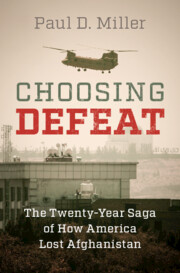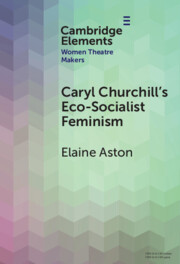Refine search
Actions for selected content:
3392779 results
Echoes of History: Legacies of the Benin Bronzes and Restitution Within the Black Atlantic
- Part of
-
- Journal:
- The Journal of African History / Volume 66 / 2025
- Published online by Cambridge University Press:
- 08 October 2025, e17
-
- Article
-
- You have access
- Open access
- HTML
- Export citation
Alternating sign matrices with reflective symmetry and plane partitions:
 $n+3$ pairs of equivalent statistics and a Cauchy-type identity
$n+3$ pairs of equivalent statistics and a Cauchy-type identity
- Part of
-
- Journal:
- Forum of Mathematics, Sigma / Volume 13 / 2025
- Published online by Cambridge University Press:
- 08 October 2025, e168
-
- Article
-
- You have access
- Open access
- HTML
- Export citation
Kings of Oxen and Horses: Draft Animals, Buddhism, and Chinese Rural Religion By Meir Shahar. New York: Columbia University Press, 2025. 376 pp. $140.00 (cloth), $35 (paper), $34.99 (e-Book)
-
- Journal:
- Journal of Chinese History , First View
- Published online by Cambridge University Press:
- 08 October 2025, pp. 1-11
-
- Article
- Export citation

The Transformation of Protest Politics
- Coming soon
-
- Expected online publication date:
- October 2025
- Print publication:
- 30 November 2025
-
- Element
- Export citation
THE UNIFICATION TYPE OF ŁUKASIEWICZ LOGIC WITH A BOUNDED NUMBER OF VARIABLES
- Part of
-
- Journal:
- The Journal of Symbolic Logic , First View
- Published online by Cambridge University Press:
- 08 October 2025, pp. 1-18
-
- Article
-
- You have access
- Open access
- HTML
- Export citation

Choosing Defeat
- The Twenty-Year Saga of How America Lost Afghanistan
-
- Published online:
- 07 October 2025
- Print publication:
- 07 October 2025

Caryl Churchill's Eco-Socialist Feminism
-
- Published online:
- 07 October 2025
- Print publication:
- 06 November 2025
-
- Element
- Export citation

The Power of the Crowd
- How the Public Can Both Spoil and Improve Social Media as a Source of Information
-
- Published online:
- 07 October 2025
- Print publication:
- 06 November 2025
-
- Element
-
- You have access
- Open access
- HTML
- Export citation
CJN volume 52 issue 6 Cover and Front matter
-
- Journal:
- Canadian Journal of Neurological Sciences / Volume 52 / Issue 6 / November 2025
- Published online by Cambridge University Press:
- 07 October 2025, pp. f1-f5
-
- Article
-
- You have access
- Export citation
Assessing the Predictive Value of mREMS in Patients with Trauma from the Syrian Civil War: A Retrospective Epidemiological Study
-
- Journal:
- Prehospital and Disaster Medicine , First View
- Published online by Cambridge University Press:
- 07 October 2025, pp. 1-8
-
- Article
- Export citation
Abbreviations
-
- Book:
- Choosing Defeat
- Published online:
- 07 October 2025
- Print publication:
- 07 October 2025, pp xv-xvi
-
- Chapter
- Export citation
7 - 2009
-
- Book:
- Choosing Defeat
- Published online:
- 07 October 2025
- Print publication:
- 07 October 2025, pp 197-226
-
- Chapter
- Export citation
Recommended methods for the collection of clinical expert judgment in rare diseases: Generating evidence to support reimbursement of orphan drugs
-
- Journal:
- International Journal of Technology Assessment in Health Care / Volume 41 / Issue 1 / 2025
- Published online by Cambridge University Press:
- 07 October 2025, e76
-
- Article
-
- You have access
- Open access
- HTML
- Export citation
Calcium bioavailability of yogurt acid whey: a comparison study with milk
-
- Journal:
- Journal of Dairy Research , First View
- Published online by Cambridge University Press:
- 07 October 2025, pp. 1-6
-
- Article
-
- You have access
- Open access
- HTML
- Export citation
TRA DISEGNO E SCOPERTA: ARCHITETTURA E ARCHEOLOGIA NEL GRAND TOUR DI WILLIAM BARNARD CLARKE. UNA TESTIMONIANZA RITROVATA
-
- Journal:
- Papers of the British School at Rome , First View
- Published online by Cambridge University Press:
- 07 October 2025, pp. 1-42
-
- Article
- Export citation
Spatiotemporal characterization of pulse pedestals by imaging 2D Self-Referenced Spectral Interferometry
-
- Journal:
- High Power Laser Science and Engineering / Accepted manuscript
- Published online by Cambridge University Press:
- 07 October 2025, pp. 1-6
-
- Article
-
- You have access
- Open access
- Export citation
Saturation in random hypergraphs
- Part of
-
- Journal:
- Combinatorics, Probability and Computing , First View
- Published online by Cambridge University Press:
- 07 October 2025, pp. 1-19
-
- Article
-
- You have access
- Open access
- HTML
- Export citation
The Late Colonial State Revisited
-
- Journal:
- Itinerario , First View
- Published online by Cambridge University Press:
- 07 October 2025, pp. 1-10
-
- Article
-
- You have access
- Open access
- HTML
- Export citation
Reviewer Comment on Quinn et al. “Central Retinal Artery Occlusion at a Canadian Academic Centre”
-
- Journal:
- Canadian Journal of Neurological Sciences / Volume 52 / Issue 6 / November 2025
- Published online by Cambridge University Press:
- 07 October 2025, p. 953
-
- Article
- Export citation
Temperature characteristics along the centreline in quasi-two-dimensional Rayleigh–Bénard convection filled with liquid metal
-
- Journal:
- Journal of Fluid Mechanics / Volume 1020 / 10 October 2025
- Published online by Cambridge University Press:
- 07 October 2025, A33
-
- Article
- Export citation













































